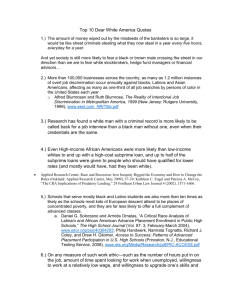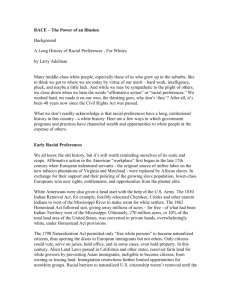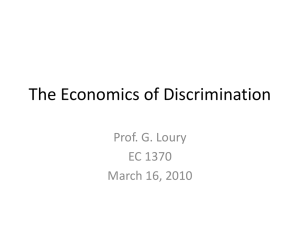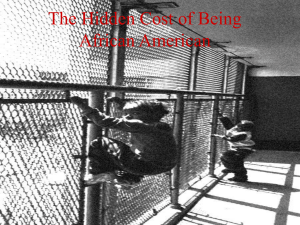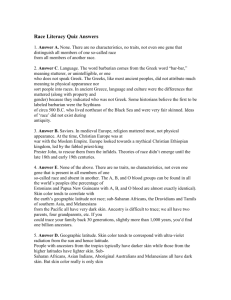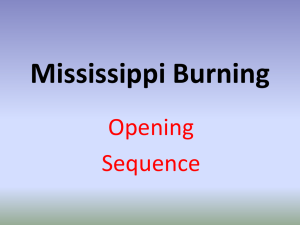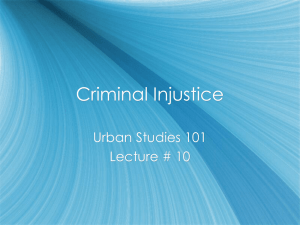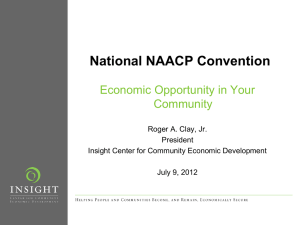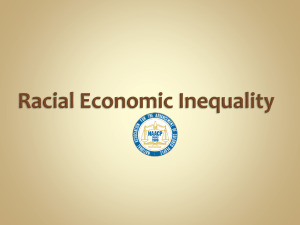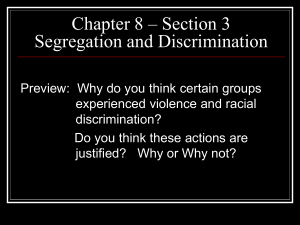Tim Wise Tim Wise is among the most prominent anti
advertisement
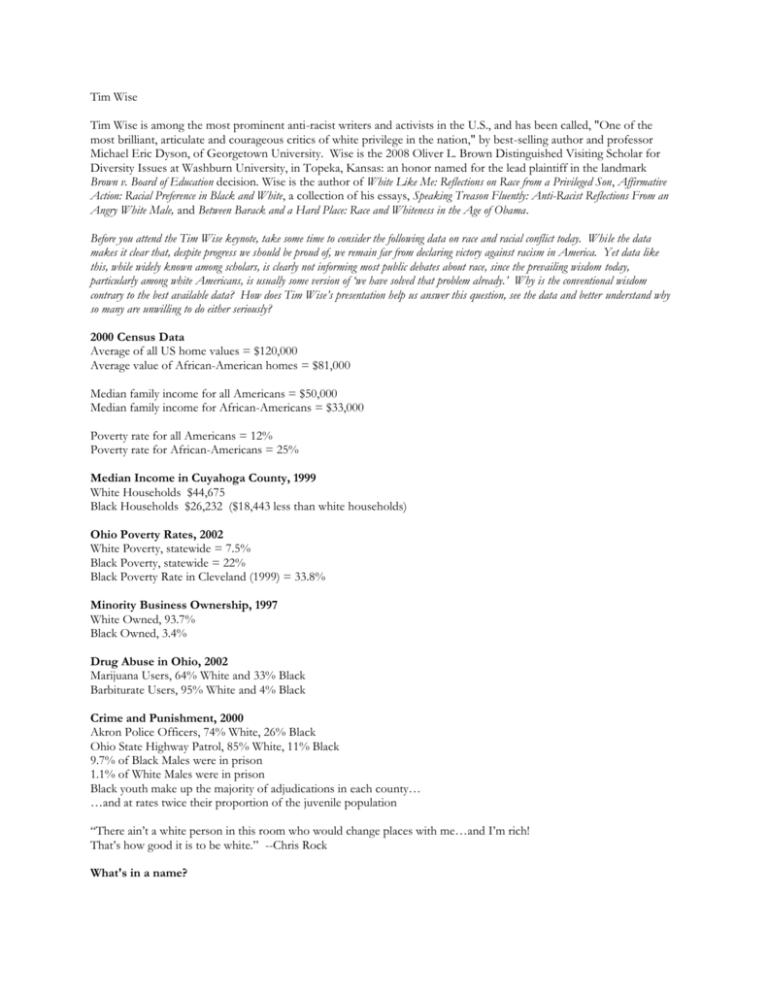
Tim Wise Tim Wise is among the most prominent anti-racist writers and activists in the U.S., and has been called, "One of the most brilliant, articulate and courageous critics of white privilege in the nation," by best-selling author and professor Michael Eric Dyson, of Georgetown University. Wise is the 2008 Oliver L. Brown Distinguished Visiting Scholar for Diversity Issues at Washburn University, in Topeka, Kansas: an honor named for the lead plaintiff in the landmark Brown v. Board of Education decision. Wise is the author of White Like Me: Reflections on Race from a Privileged Son, Affirmative Action: Racial Preference in Black and White, a collection of his essays, Speaking Treason Fluently: Anti-Racist Reflections From an Angry White Male, and Between Barack and a Hard Place: Race and Whiteness in the Age of Obama. Before you attend the Tim Wise keynote, take some time to consider the following data on race and racial conflict today. While the data makes it clear that, despite progress we should be proud of, we remain far from declaring victory against racism in America. Yet data like this, while widely known among scholars, is clearly not informing most public debates about race, since the prevailing wisdom today, particularly among white Americans, is usually some version of ‘we have solved that problem already.’ Why is the conventional wisdom contrary to the best available data? How does Tim Wise’s presentation help us answer this question, see the data and better understand why so many are unwilling to do either seriously? 2000 Census Data Average of all US home values = $120,000 Average value of African-American homes = $81,000 Median family income for all Americans = $50,000 Median family income for African-Americans = $33,000 Poverty rate for all Americans = 12% Poverty rate for African-Americans = 25% Median Income in Cuyahoga County, 1999 White Households $44,675 Black Households $26,232 ($18,443 less than white households) Ohio Poverty Rates, 2002 White Poverty, statewide = 7.5% Black Poverty, statewide = 22% Black Poverty Rate in Cleveland (1999) = 33.8% Minority Business Ownership, 1997 White Owned, 93.7% Black Owned, 3.4% Drug Abuse in Ohio, 2002 Marijuana Users, 64% White and 33% Black Barbiturate Users, 95% White and 4% Black Crime and Punishment, 2000 Akron Police Officers, 74% White, 26% Black Ohio State Highway Patrol, 85% White, 11% Black 9.7% of Black Males were in prison 1.1% of White Males were in prison Black youth make up the majority of adjudications in each county… …and at rates twice their proportion of the juvenile population “There ain’t a white person in this room who would change places with me…and I’m rich! That’s how good it is to be white.” --Chris Rock What's in a name? A 2003 Gallup Poll found that 55% of white Americans “feel that racial minorities in this country have equal job opportunities as whites.” However, the Akron Beacon Journal reported on a University of Chicago/MIT study that provided powerful evidence demonstrating that overt racial discrimination in employment remains “easy to find—if you know where to look.” Researchers sent out 5,000 fictitious resumes in response to help-wanted ads. Each resume was identical, except for being randomly assigned either a white-sounding name (Emily Walsh, Brendan Baker) or a blacksounding name (Lakisha Washington, Jamal Jones). “The study found that applicants with white-sounding names were 50% more likely to get called for an initial interview than applicants with black-sounding names. What’s more higher quality resumes provided little advantage for black applicants.” How can we explain this, other than to conclude, as one scholar did, that “deeply entrenched racism still blocks equal opportunity for blacks in the labor market”? Some questions to think about… What do these findings suggest about how the free market really operates? In this context, what is the function of affirmative action policies? If we eliminate affirmative action policies, would we be safe in assuming that this would mean that the best person for the job will get the job? Excerpt from Deadly symbiosis: When Ghetto and Prison Meet and Mesh, Loic Wacquant “To explain the astounding over-representation of blacks behind bars that has driven mass imprisonment in the United States, one must break out of the ‘crime-and-punishment’ paradigm to reckon the extra-penological function of the criminal justice system as instrument for the management of dispossessed and dishonored groups. This article places the prison in the historical sequence of ‘peculiar institutions’ that have shouldered the task of defining and confining African Americans, alongside slavery, the Jim Crow regime, and the ghetto. The recent upsurge in black incarceration results from the crisis of the ghetto as device for caste control and the correlative need for a substitute apparatus for the containment of lower-class African Americans…. REFRAMING BLACK HYPER-INCARCERATION “Three brute facts stare the sociologist of racial inequality and imprisonment in America in the face as the new millennium dawns. First, since 1989 and for the first time in national history, African Americans make up a majority of those walking through prison gates every year. Indeed, in four short decades, the ethnic composition of the US inmate population has reversed, turning over from 70 percent white at the mid-century point to nearly 70 percent black and Latino today, although ethnic patterns of criminal activity have not been fundamentally altered during that period.” How is this possible without an explanation that focuses on race and racism? If we think about this carefully, it cannot be easily dismissed by the usual sound bites. If patterns of criminal activity for black Americans have not changed, it is not soft on crime to seriously demand an explanation for why it is that incarceration patterns have reversed…it is precisely the question any thinking and patriotic American cannot but insist our leaders productively respond to, right? Excerpt from Getting into the Black: Race, Wealth and Public Policy, Dalton Conley (You can find the full article in Political Science Quarterly, Winter99/2000, v114n4) “Wealth ownership is the socioeconomic measure that displays the single greatest racial disparity in America today. Blacks own, on average, one-twelfth the amount of property as whites, and this gap in net worth continues to grow even in the post-civil rights era. The importance of this asset inequality cannot be understated. If one takes an intergenerational view and measures class by going beyond labor market measures to include property ownership, then many dynamics previously seen as rooted in an alternative or "underclass" culture among African Americans should in fact be viewed as a result of economic inequality. In many instances, the effects of race are dramatically obscured by the impact of class dynamics and economic resources. For example, if we simply contrast blacks and whites without regard to socioeconomic background, we find that African Americans are more likely to drop out of high school and less likely to complete college, that they are employed for fewer hours and earn less money per hour than whites, that they have lower levels of wealth, and that they are more likely to have a child out of wedlock or to use welfare as young adults. But if we statistically compare blacks and whites who are similar in terms of their individual characteristics (age, gender, number of siblings, and, in some analyses, education and income levels), their family backgrounds (parents' age, whether they grew up in a female-headed household or one that used welfare), and their class origins (parents' education level and occupational prestige, as well as their family's permanent income, net worth, and types of assets), we find that these racial differences change significantly in magnitude and sometimes even in direction. For instance, when class background is equalized, blacks are just as likely as whites to have completed college. When we take into consideration parental assets, we find that the black-white wealth gap among young adults disappears. Racial differences in the chance of using welfare among this age group also vanish… …While the impact of race varies depending on which outcome we examine, in almost all instances socioeconomic variables have a much greater impact in predicting outcomes than does skin color or racial identity for young adults who have grown up since the landmark civil rights legislation of the 1960s. These findings represent both good and bad news for policy makers, since money is a lot more transferable than race. But the important racial gap in wealth that stems from generations of black-white inequality is not easily remediable, because it largely results from past dynamics rather than from a dearth of "equal opportunity" in the post-1960s world. If wealth differences could be rectified by providing equal access in housing and credit markets, a policy solution would be clear. But class differences that result from the wealth of one's parents are not so easy to redress….” Finally, write a short paper that compares our every day conversations about race, what our most mainstream public and private leaders say about race, and the gap between these and the data presented here that draws on the data and insights provided by Tim Wise during his keynote address.
